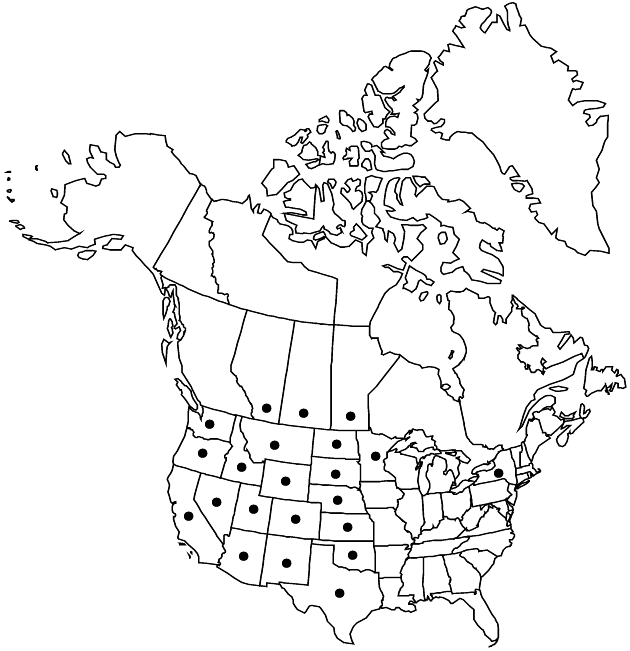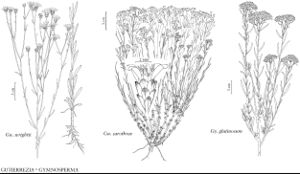Difference between revisions of "Gutierrezia sarothrae"
Trans. New York Acad. Sci. 7: 10. 1887.
FNA>Volume Importer |
FNA>Volume Importer |
(No difference)
| |
Revision as of 18:41, 24 September 2019
Subshrubs, 10–60(–100) cm. Stems minutely hispidulous. Leaves: basal and proximal absent at flowering; cauline blades 1- or 3-nerved, linear to lanceolate, sometimes filiform and fascicled, 1.5–2(–3) mm wide, little reduced distally. Heads (sessile to subsessile in compact glomerules) in dense, flat-topped, corymbiform arrays. Involucres cylindric to cuneate-campanulate, 1.5–2(–3) mm diam. Phyllary apices flat. Ray florets (2–)3–8; corollas yellow, 3–5.5 mm. Disc florets (2–)3–9 (usually bisexual and fertile, rarely functionally staminate, corollas tubular-funnelform, lobes erect to spreading or recurved, deltate). Cypselae 0.8–1.6(–2.2) mm, faces without oil cavities, densely strigoso-sericeous; pappi of 1–2 series of narrowly oblong- to ovate-lanceolate or obovate scales (readily falling, those of discs 1/3–1/2 corollas, shorter on rays). 2n = 8, 16, 32.
Phenology: Flowering Jul–Nov(–Jan).
Habitat: Grasslands, commonly on rocky, open slopes
Elevation: 50–2900 m
Distribution

Alta., Man., Sask., Ariz., Calif., Colo., Idaho, Kans., Minn., Mont., Nebr., Nev., N.Mex., N.Y., N.Dak., Okla., Oreg., S.Dak., Tex., Utah, Wash., Wyo., Mexico (Baja California, Baja California Sur, Chihuahua, Coahuila, Durango, Nuevo León, San Luis Potosí, Sonora, Zacatecas).
Discussion
Gutierrezia sarothrae is often abundant in overgrazed pastures; it is naturalized in New York.
Selected References
None.
